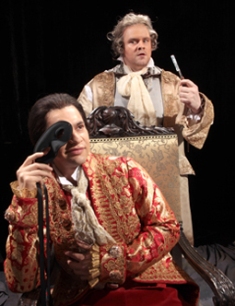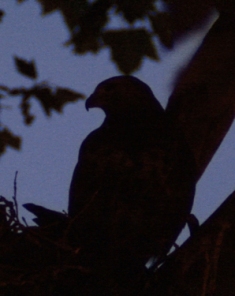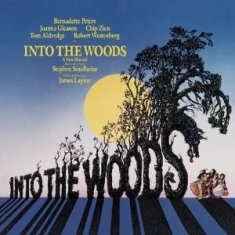
Hell, Damnation and Little Red Riding Hood
Just in time for Valentine’s Day: hell, damnation and Little Red Riding Hood.
Productions at the University of Cincinnati College-Conservatory of Music offer those flaming alternatives this month, with Mozart’s “Don Giovanni” Feb. 9-12 in Patricia Corbett Theater; Hector Berlioz’ “Damnation of Faust” Feb. 25 in Corbett Auditorium; and Stephen Sondheim’s “Into the Woods” Feb. 23-March 4 in PCT.
You might call it visiting the Dark Side of the Force.
Premiered in 1787 in Prague, “Don Giovanni” is arguably the best known version of the Don Juan
legend. Set in 18th-century
Spain, it follows a notorious libertine through one too many conquests, which
land him in hell after an encounter with the ghost of a victim’s father. Muni, professor of opera and distinguished
artist in residence at CCM, takes “a very straight-forward, narrative-based
view” of the subject, he said.

“One of the core inspirations for our team was the explanation Giovanni gives Leporello (his servant) about his reasons for seducing women. In most productions, these lines are played for laughs, but we decided it might be more interesting if we took these sentiments seriously – from Giovanni’s perspective, of course. This gist of it is that he is sincerely in love with each woman he seduces.”
For dramatic punch, it is vital to view each character through their own lens, said Muni. “A villain becomes more villainous to the audience if he or she is played as believing they are justified in their actions. Most contemporary productions of ‘Giovanni’ depict him as an absolute brutal, angry, violent, dark, sadistic personality. This not only dramatically flattens the entire piece but, more harmfully, reduces all those who are attracted to Giovanni as either morons or masochistic.”
Mozart and his librettist Lorenzo da Ponte keep the drama sharp. What occurred in Donna Anna’s bedroom in Act I has been stimulating controversy from the time of the opera’s premiere, said Muni. “Did the sexual act occur, was it rape, seduction? The combination of text and music result only in ambiguity.”
Giovanni seeks “an extreme version of personal liberty -- for everyone,” said Muni. “He is both hero and anti-hero: hero in the sense that he sticks to his beliefs in the face of death or worse, anti-hero in the sense that he is a sociopath, a man who has no feelings whatsoever for the emotional wreckage he leaves behind. One of the foundations of the production is Don Giovanni as a destroyer of society, who in turn is destroyed.”
“Don Giovanni” will be sung in Italian with English supertitles. Nicholas Muni directs, with alternating student casts. Jung-Hyun Cho conducts, with scenic design by Mark Halpern, costumes by Reba Senske. Performances are 8 p.m. Feb. 9-11; 2 p.m. Feb. 11-12 in Patricia Corbett Theater. Tickets are $27-$29; $17-$19 for students. $11 student rush tickets available for the Feb. 11 matinee, beginning at 1:30 p.m.
Berlioz became captivated with Goethe’s “Faust” as a
young man, said Earl Rivers, CCM director of choral studies, who will conduct “The Damnation of Faust” (1846). “He lived with it for 30 years and actually
wrote eight scenes as a young man, then came back to it in his mature years.” It is a re-telling of the love story of Faust
and Marguerite from Part I of Goethe’s “Faust.”
(However, the Devil, i.e. Mephistopheles, wins in Berlioz’ version and consigns
Faust to hell, whereas Faust lives and is ultimately received into heaven in
Goethe’s play.)

Part opera, part symphony – Berlioz dubbed it a “dramatic legend” -- it was meant for concert performance, though it is staged from time to time. The CCM production will not be staged, but it will feature an original video by Raul Barcelona, a faculty member in E Media. “It seems to me that if Berlioz were writing today, he would be writing for movies,” said Rivers. “The piece is so cinematic in its construction. I think that’s what makes it a challenge for opera stage directors.”
Barcelona is creating something “very contemporary,” said Rivers. “He is not going to make it look like the Faust story. His goal is to complement it with different kinds of imagery. I’ve suggested to him where it might be static or where it might be fluid: on the plains of Hungary, or simply dialogue moving very quickly for the imagination.” The chorus will be downstage in front of the orchestra, “in 18th-century style,” with the soloists in the middle.
“Damnation of Faust” was last performed at CCM in 1998. Another reason for doing it now, Rivers said, is voices. “We recognized a couple of years ago that we had student talent of the level to do Faust and Marguerite. They are really stretch roles, voices you don’t often find on the student level.” Faust will be sung by tenor Daniel Ross (heard with the Cincinnati Symphony Orchestra in Handel’s “Messiah” in December). Marguerite will be mezzo-soprano Deborah Nansteel. Faculty artist Kenneth Shaw, bass-baritone, will sing Mephistopheles.
Listen for such well known orchestral excerpts from the work as the “Rakoczy March” and “Minuet of the Will-o’-the-Wisps.” And be warned: there are few scenes in the choral/orchestral literature as hair-raising as “Ride to the Abyss,” with Faust and Mephistopheles on horseback beset by demons en route to hell.
“The Damnation of Faust” will be sung in French with English supertitles. Earl Rivers conducts the CCM Chamber Choir, Chorale, Philharmonia Orchestra, Cincinnati Children’s Choir and soloists. The one-night-only performance is 8 p.m. Feb. 25 in Corbett Auditorium. Admission is $12, $5 for non-UC students, UC students free.
Sondheim’s award-winning musical “Into the Woods” (1986) explores the “darker
side of well-known folk and fairy tales, examining what happens when the
characters attain their state of ‘happily ever after,’” said director Aubrey
Berg, Patricia A. Corbett distinguished chair of musical theater at CCM. The 24 characters include Little Red Riding
Hood, Jack (of “Jack and the Beanstalk”) and Cinderella, whose wishes interact
with that of a Baker and his Wife, who long for a child. Becoming entangled with them are Jack’s
Mother and their Cow, a Witch, a Wolf, Cinderella’s relatives, a couple of
Princes, a Giant, Rapunzel and Sleeping Beauty.
All go “into the woods” to find solutions to their problems.

“Though the force of evil (the Giant) is ultimately vanquished,” said Berg, “the victory comes at terrible price for many of the characters -- and only after they realize that one must give up self-serving behavior and band together for the greater good.”
There is a great deal of comedy and clever word-play in “Into the Woods.” “As the tension intensifies with the advent of a rampaging giant, the proceedings take on a darker tone, sometimes even absurd,” said Berg. “For all its spritely humor, there are meaningful life-lessons to be learned. It is a piece that children can enjoy, but only grown-ups can appreciate.
“The audience should be made aware of a hostile exterior force that threatens happiness and survival at every turn. Every generation has its giants to conquer, and in our world today, these are legion.”
Berg’s approach is “very theatrical,” he said. “In fact, the production takes place in a toy theatre built on the stage of the Patricia Corbett Theatre. The Giant’s destruction begins with the set and then gradually moves to the destruction of the theatre itself. If the audience feels a Giant is rampaging on Calhoun Avenue, so much the better.”
“’Into the Woods’ marks the 20th anniversary of the Patricia A. Corbett Chair of Musical Theatre. “At the time of its inception, it was the only academic chair of its kind in the United States, the American equivalent of the Chair in Musical Theatre endowed by Cameron Macintosh in honor of Stephen Sondheim at Oxford one year later,” said Berg. “Her generosity has helped scores of students with scholarship aid, enabled the program to invite master teachers to campus, established New York and Chicago showcases for graduating seniors, and underwrote the first admission-free musicals in the Studio Theatre, our gift to the Cincinnati theatre-going community.”
Aubrey Berg directs “Into the Woods,” with musical direction by Steven Goers, choreography by Patti James, set design by Ryan Howell and costumes by Dean Mogle. Performances are 8 p.m. Feb. 23-25 and March 1-3, with matinees at 2 p.m. Feb. 26 and March 3-4. Tickets are $27-$29, $17-$19 for students, $11 for student rush tickets Feb. 25 and March 3, beginning at 1 p.m.
Tickets for all CCM performances are available by calling (513)556-4183. Further information at http://ccm.uc.edu/boxoffice.html(first published in Express Cincinnati)